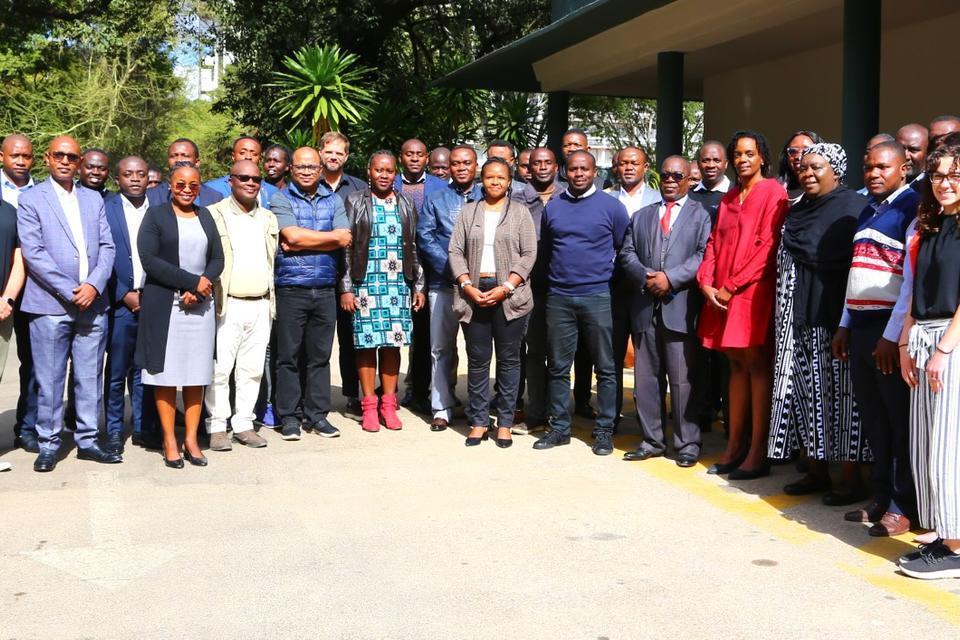Zambia Launches National Crop Monitor to Enhance Agricultural Resilience Amidst Drought Crisis
- From
-
Published on
10.07.24
- Impact Area

Southern Africa is facing an unprecedented climate crisis, with the 2023-2024 drought causing the worst mid-season dry spell in over 100 years and the lowest mid-season rainfall in 40 years, exacerbated by the El Niño phenomenon. The severe impact on the population has led to the declaration of a national disaster in Malawi, Zambia, and Zimbabwe. In Zambia alone, 1 million hectares of maize crops have died, affecting nearly half of the country’s maize-growing area and leaving 6.6 million people in need of humanitarian assistance. This disaster has highlighted the need for proactive monitoring and integrated Early Warning Systems (EWS) that can provide accurate and timely information on crop conditions. Such systems are essential for effective government action and policy implementation together with agriculture delivery organizations to enhance food security and support smallholder farmers who depend on their crops for both livelihoods and sustenance.
Earth Observation (EO) data offers crucial support by allowing continuous monitoring of environmental conditions. It facilitates the identification of early indicators of drought and crop stress, allowing authorities anticipate and mitigate agricultural risks before they escalate. EO data also enhances resource allocation by identifying the areas that are most vulnerable to climate impacts, thereby optimizing disaster response efforts and increasing resilience among communities that rely on agriculture for their livelihoods.
To address the growing challenges for agriculture, The Zambia Crop Monitoring and Learning Exchange Workshop to advance agricultural monitoring using EO data was jointly organized by the Alliance of Bioversity International and CIAT, the NASA Harvest team at the University of Maryland (UMD), the IGAD Climate Prediction and Application Centre, and the Group on Earth Observations Global Agricultural Monitoring (GeoGLAM). The workshop facilitators supported training, learning exchange and the launch of Zambia’s National Crop Monitor. Led by Dr. Catherine Nakalembe (Assistant Professor at the University of Maryland/ Africa Lead of NASA Harvest), the national crop monitors are a GEOGLAM effort that aim to enhance global agricultural monitoring through advanced remote sensing tools. The launch was supported by a capacity-building workshop in Lusaka, Zambia, inaugurated by Mr. Lyson Phiri – Deputy Director of the Zambia Meteorological Department on behalf of the Permanent Secretary of the Ministry of Green Economy and Environment. With strong representation from Zambia’s 10 provinces, including professionals in meteorology and agriculture, the training brought together 58 participants including crop monitor leads from Ethiopia, Kenya, Rwanda, Tanzania, and Uganda. The facilitators shared frameworks for adopting and adapting Earth observations and success stories of using platforms and tools in support of national monitoring and agricultural statistics systems from their respective countries.
Related news
-

Accelerating wheat breeding, from Toluca in Mexico to the world
CGIAR Initiative on Breeding Resources12.11.25-
Climate adaptation & mitigation
-
Nutrition, health & food security
In Mexico, a project has been completed to develop new elite parental lines of wheat…
Read more -
-

Mapping Where People Can Live Safely in a Changing Climate: The Global Habitability Index
Ibukun Taiwo12.11.25-
Climate adaptation & mitigation
Where can the world’s most vulnerable populations live safely and sustainably? Across the world, r…
Read more -
-

CGIAR@COP30: Loss and Damage Negotiation Updates
Climate Action Science Program12.11.25-
Adaptation
-
Climate adaptation & mitigation
-
Mitigation
For vulnerable countries and communities, climate change is already causing devastation that no amou…
Read more -
